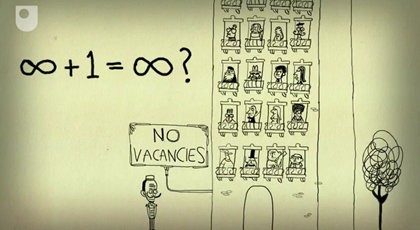It hurts quite a bit when you stub your toe. Try being hit by a whole galaxy! Because that’s exactly what’s going to happen. The galaxy Andromeda (our closest spiral galaxy) is speeding towards us a massive 260,000 miles an hour…
Before you start planning for doomsday you might want to consider galactic distances. It is absolutely true that Andromeda is speeding towards us at an incredibly high speed, however, due to the gargantuan distance between us it will be more than 4 billion years before it gets anywhere near us. So you can stop breathing into a paper bag now.
This beautifully demonstrates the vastness of the universe in which we live. Something which we consider massive (take the earth for instance of which the diameter is 1.2756 × 10^7 or 12756000 meters in diameter) is tiny compared to the size of the universe (9.2 × 10^26 meters or 10 billion kilometres in diameter). This also illustrates the importance of fundamental areas of mathematics such as base systems. For example when using very large or very small numbers we use standard notation (used above) instead of attaching many zeros to a number to demonstrate its size. An example that shows why we switch when using extreme numbers is; imagine trying to give directions to Edinburgh using only millimetres. This would be very confusing, so instead we switch to using kilometres.
Pictured: Ngc 2207, Spiral Galaxy
However telling you that the universe is 10 billion kilometres wide does nothing really to explain just how massive it is. An area which I find fascinating is light years. This is the distance which light will have travelled within a year. As I am sure you are away, light travels unbelievably quickly (just think about how fast a room changes from light to dark when you switch a light on, it is near instantaneous). The actual distance light can travel in a year is 9.46 × 10^15 meters or 9.5 trillion miles. Now, the nearest star to our sun is Proxima Centauri, and I stress that this is the nearest to us. For light (the fastest moving thing we know of) to travel from Proxima Centauri to us would take 4 years (Yes, that does mean we see 4 years into the past when looking at Proxima Centauri). Now imagine how long it would take for light to travel across the universe! Or how long it would take for a human spacecraft to travel that far!
Before we were given an input on astronomy earlier this week, I knew very little of the content explored within this blog. This is something I think is a shame, as I’m sure this is an area I would have found hugely interesting as a child in primary, much more so than simply learning the names of the planets in our solar system and that they all go round the sun (though of course I concede this is vital knowledge to have).
As a future practitioner this is an area I would very much like to explore with my class. To learn about the solar system which we live in, but to also introduce the notion of fundamental mathematics within this subject area to further explore the world of astronomy and mathematics in an exciting and engaging way.





